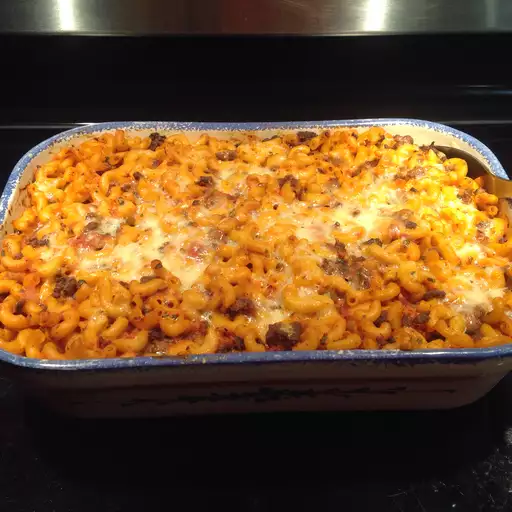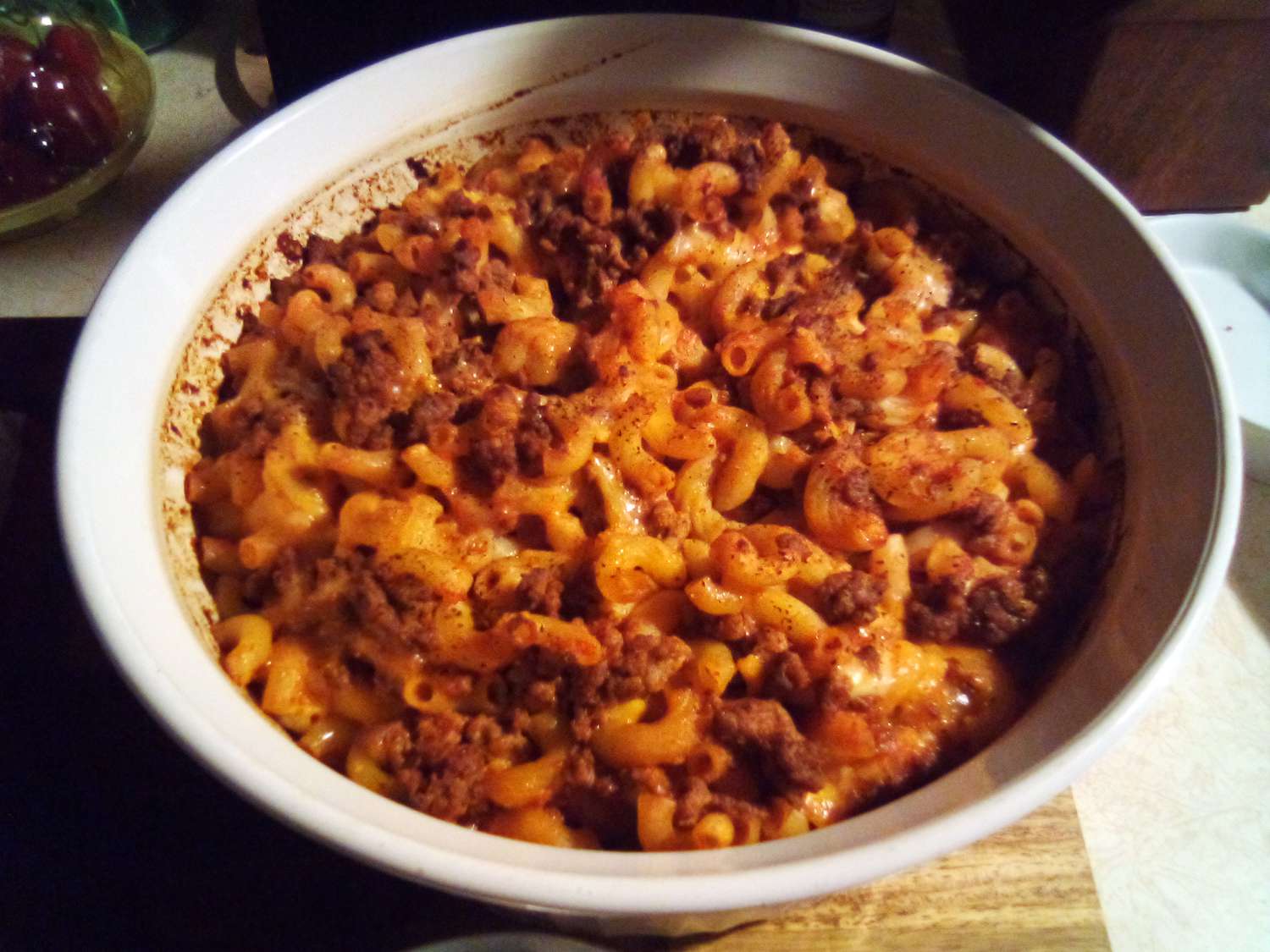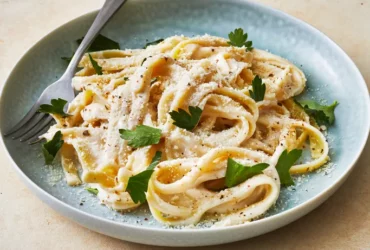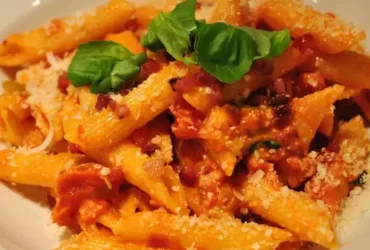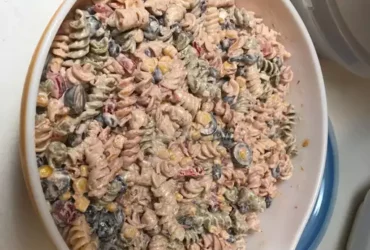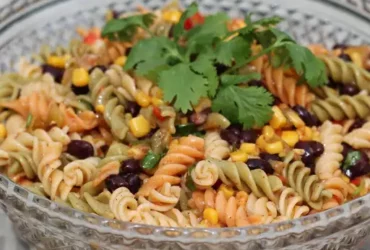Ingredients
For the Beefaroni Sauce
The ingredients for the Beefaroni sauce are crucial to creating a rich and savory flavor profile that complements the pasta and beef perfectly. Here are the essential ingredients:
For the Beefaroni Sauce
- Beef Broth: A good quality beef broth is the foundation of the sauce, providing a deep and meaty flavor. You can use store-bought or homemade broth.
- Olive Oil: A generous amount of olive oil adds richness and helps to brown the onions and ground beef.
- Onion: A medium-sized onion is sautéed until translucent, adding a sweet and caramelized flavor to the sauce.
- Ground Beef: Browned ground beef adds depth and texture to the sauce. You can use lean or regular ground beef, depending on your preference.
- Canned Crushed Tomatoes: A can of crushed tomatoes adds a tangy and slightly sweet flavor, thickening the sauce as it simmers.
- Tomato Paste: Concentrated tomato paste intensifies the flavor of the sauce, enhancing the umami taste.
- Dried Oregano: A pinch of dried oregano adds a pungent and earthy flavor, balancing out the richness of the sauce.
- Dried Basil: A sprinkle of dried basil provides a subtle and herbaceous note to the sauce.
The key to a great Beefaroni sauce is to balance the flavors, allowing each ingredient to shine without overpowering the others. The combination of beef broth, olive oil, onions, ground beef, crushed tomatoes, tomato paste, dried oregano, and dried basil creates a harmonious and satisfying flavor profile that complements the pasta and beef perfectly.
The ingredients used in this Beefaroni recipe are essential to its success. The main components include ground beef, which provides a rich and savory flavor to the dish.
This ground beef can be purchased in various forms such as lean or regular ground beef, depending on personal preference. Some recipes may also require cooked sausage to add extra flavor and texture.
Another crucial ingredient is macaroni, a type of pasta that serves as the base for the Beefaroni recipe. There are different types of macaroni available in stores, such as elbow macaroni or bow tie macaroni, each with its own unique shape and size.
The sauce is another key component of this recipe. The sauce can be made from a mixture of tomato paste, canned tomatoes, onion powder, garlic powder, salt, and black pepper. This sauce serves as the binding agent for all the other ingredients in the dish.
Some Beefaroni recipes also include vegetables such as onions, bell peppers, or mushrooms to add extra flavor and nutrition. These can be added towards the end of cooking time so they retain their texture and nutritional value.
The cheese is another ingredient that contributes significantly to the taste and consistency of this dish. Cheddar cheese, mozzarella cheese, or a combination of both can be used in various proportions depending on personal preference.
Additionally, some recipes may include other ingredients such as sugar, Worcestershire sauce, or Italian seasoning to enhance the flavor profile. These can be adjusted according to taste and availability.
The choice of cheese can make a significant difference in the flavor and texture of Beefaroni. Some people prefer a sharp cheddar for its bold flavor, while others opt for mozzarella for its creaminess.
1 lb ground beef
When it comes to making a delicious Beefaroni recipe, choosing the right ingredients is crucial for achieving that perfect blend of flavors and textures. One essential ingredient that can’t be overlooked is ground beef.
A pound of ground beef is typically what you’ll need for this recipe, depending on the number of servings you’re aiming for. The amount can always be adjusted to suit your specific requirements, but having a general guideline helps ensure you don’t end up with too much or too little meat.
The type of ground beef used can also affect the final result. You have several options, including lean ground beef, regular ground beef, or even organic and grass-fed alternatives. Lean ground beef is ideal if you want to keep your Beefaroni a bit healthier, as it contains less fat compared to regular ground beef.
When selecting your ground beef, make sure to check the package for any signs of spoilage, such as an off smell or slimy texture. You’ll also want to choose ground beef with at least 90% lean meat content for a balanced taste and to avoid overpowering the other ingredients in your Beefaroni.
Ground beef is a versatile ingredient that pairs well with a variety of seasonings, herbs, and spices, making it easy to incorporate into different recipes. For the Beefaroni recipe, you’ll typically want to add some onion powder, salt, and pepper for flavor, as well as any additional ingredients called for in the specific recipe variation.
1 onion, finely chopped
The finely chopped onion used in this Beefaroni recipe is a fundamental component that adds depth and richness to the dish. When it comes to selecting an onion, look for one that is firm to the touch and has no signs of sprouting or mold.
One medium-sized onion should be sufficient for this recipe. To chop the onion finely, first peel off its papery skin and place it on a cutting board. Next, cut the onion in half through the root end to create two symmetrical hemispheres.
Place one of the hemispheres cut-side down on the cutting board. Position a chef’s knife at a 45-degree angle with the blade pointing towards you, and carefully chop the onion into very thin slices. You can also use a mandoline or food processor to get uniform, fine pieces if desired.
Now, turn your attention back to the hemispheres and slice them in the same manner as the first one. Then, chop these slices into smaller pieces until you have obtained the required finely chopped onion for your Beefaroni recipe.
The total amount of finely chopped onion should be about 2 tablespoons. You can store any leftover onion in an airtight container in the refrigerator for future use. Be sure to label and date it so you know when to discard it.
2 cloves garlic, minced
In this Beefaroni Recipe, two cloves of garlic are a crucial ingredient that adds depth and richness to the dish.
What is Garlic?
Garlic is a fundamental ingredient in many cuisines, particularly Mediterranean and Asian cooking. It’s a member of the onion family and belongs to the Allium genus.
The two main types of garlic used in cooking are:
- Soft-neck garlic: This type has a mild flavor and is often used in sauces, marinades, and salad dressings.
- Hard-neck garlic: This variety has a stronger flavor and is commonly used in roasting and sautéing.
In this Beefaroni Recipe, we’re using the milder soft-neck garlic for its versatility and ease of mincing.
Minced Garlic vs. Whole Garlic Cloves
Mincing garlic releases its enzymes, which break down the sulfur compounds responsible for its pungent aroma and flavor.
The process of mincing also helps to distribute the flavors more evenly throughout the dish, making each bite more flavorful.
How to Mince Garlic
Mincing garlic is a simple process that requires a little practice to master:
- Pick fresh garlic cloves and remove any excess skin or papery layers.
- Crush the cloves gently using a chef’s knife, rock salt, or garlic press to release their oils and flavor compounds.
- Minced garlic will typically be about 1-2 millimeters in size, depending on your desired texture.
In our Beefaroni Recipe, we’ll be mincing two cloves of garlic to add a subtle yet aromatic depth to the dish.
Why Two Cloves?
- The exact number of garlic cloves used can vary depending on personal taste preferences and the intensity of flavors in other ingredients.
- In this recipe, two cloves provide just enough pungency without overpowering the other flavors. Feel free to adjust the amount to your liking!
1 can (28 oz) crushed tomatoes
- Canned crushed tomatoes are a staple ingredient in many Italian-inspired dishes, including the classic Beefaroni recipe.
- One 28 oz can of crushed tomatoes is typically sufficient to make a large batch of Beefaroni, which usually serves 4-6 people.
- The crushed tomatoes used in this recipe are usually made from San Marzano tomatoes, which are renowned for their sweet-tart flavor and low acidity level.
- Before opening the can, it’s essential to inspect the contents for any visible signs of damage or spoilage. If the can is dented, swollen, or has a leaky lid, it should be discarded immediately.
- A 28 oz can of crushed tomatoes contains approximately 2 cups of tomato puree, which makes up a significant portion of the sauce in Beefaroni.
- When cooking with canned crushed tomatoes, it’s essential to note that they have a higher salt content than fresh or homemade tomatoes. This means that you may need to adjust the amount of additional salt used in the recipe accordingly.
- Canned crushed tomatoes can be stored for up to 2 years if kept in a cool, dark place. However, once opened, it’s recommended to use them within a week and store them in the refrigerator at 40°F (4°C) or below to prevent spoilage.
1 tsp dried oregano
- Oregano is a popular herb that is commonly used in many Mediterranean and Italian dishes, including our beloved Beefaroni.
- The 1 tsp of dried oregano called for in this recipe adds a distinctive flavor to the dish, with its pungent and earthy undertones.
- Oregano is known for its ability to pair well with other strong flavors, such as garlic, tomatoes, and basil, making it an excellent choice for adding depth to our Beefaroni.
- The dried form of oregano has a longer shelf life than the fresh version and can be stored for several months without losing its flavor or aroma.
- To use dried oregano in cooking, simply sprinkle it over your dish as needed, or mix it into sauces and marinades for added depth of flavor.
- Oregano is a versatile ingredient that can be used to add flavor to a wide range of dishes, from pasta sauces to meat rubs and salads.
1 tsp dried basil
Dried basil is a popular herb commonly used in cooking to add flavor and aroma to various dishes, including pasta recipes like the Beefaroni.
The ingredient is essentially dried leaves from the sweet basil plant (Ocimum basilicum), which is native to tropical regions of Central Africa but widely cultivated in many parts of the world for its fragrance and culinary uses.
When using dried basil in cooking, a common measurement is 1 teaspoon. This can be used as a substitute for fresh basil or combined with other herbs to achieve the desired flavor profile.
Uses and Benefits
- Dried basil has a more concentrated flavor than fresh basil, making it easier to store and transport.
- It can be used in various dishes beyond pasta sauces, such as soups, stews, salads, and marinades for meats.
- The herb contains antioxidants, which may help protect against cell damage and inflammation in the body.
Culinary Pairing Tips
In general, dried basil pairs well with ingredients like garlic, tomatoes, onions, and olive oil. When used in a Beefaroni recipe, it can complement the flavors of beef and tomato sauce.
Salt and pepper to taste
The key to bringing out the flavors in any dish lies in the quality and selection of its ingredients. In the case of a classic Beefaroni recipe, it’s essential to use the right combination of spices and seasonings to create a harmonious balance of flavors.
Salt and pepper are two fundamental seasoning staples that are often used interchangeably, but they serve different purposes in cooking. Salt is primarily used to enhance flavor, while pepper adds a subtle kick and helps to bring out the natural flavors of other ingredients.
The phrase “to taste” is an instruction that suggests adding a pinch or a dash of salt and pepper based on personal preference. However, it’s worth noting that this phrase can be misleading, especially for those who are new to cooking. It implies that there is a certain amount of seasoning that everyone agrees upon, but in reality, the perfect balance of salt and pepper can vary greatly depending on individual tastes.
In the context of Beefaroni, it’s not uncommon for cooks to add a generous amount of salt and pepper to bring out the flavors of the ground beef, onions, and pasta. Some people may prefer a more subtle seasoning, while others may like a bolder flavor profile.
To achieve the perfect balance of salt and pepper in your Beefaroni recipe, it’s essential to taste as you go along. Add a pinch or a dash of salt and pepper, and then wait for a moment before tasting again. This will allow you to gauge the impact of each seasoning addition and make adjustments accordingly.
Remember that salt and pepper are not just used for flavor; they also play a crucial role in texture and presentation. A well-seasoned dish can elevate its appearance and make it more appealing to eat. In the case of Beefaroni, the right balance of salt and pepper can transform a humble pasta dish into a hearty, satisfying meal.
When it comes to adding salt and pepper to your Beefaroni recipe, consider the following tips:
Use high-quality salt that is free from additives and anti-caking agents. This will allow you to appreciate the natural flavors of the dish without any unwanted flavor enhancers.
Choose a freshly ground black pepper for maximum flavor. Pre-ground pepper can become stale and lose its potency over time.
Experiment with different ratios of salt to pepper to find your perfect balance. Some people may prefer a 1:1 ratio, while others may like more salt or pepper.
For the Pasta
- The pasta for this classic beefaroni recipe typically consists of elbow macaroni or a similar short, tubular shape.
- The macaroni can be made from various types of wheat flour and water.
- It’s also possible to add other ingredients like eggs, salt, or olive oil to the dough during its preparation.
- The type of pasta used in beefaroni is often chosen for its ability to hold onto sauces well.
- For a more traditional flavor, it’s common to use semolina or all-purpose flour with water and a touch of salt.
- The addition of olive oil can also help the dough come together smoothly and improve its texture.
- In general, high-quality pasta is preferred for its better texture and ability to hold onto flavors.
- The key to creating an authentic Beefaroni dish lies in selecting the right ingredients.
Here’s a comprehensive breakdown of what you need:
Main Ingredients
- Beefaroni pasta: This is the star of the show, and it’s crucial to use the right type. Look for Beefaroni pasta that contains a combination of ground beef, tomato sauce, and other seasonings.
- Ground beef: You’ll need about 1 pound of ground beef for this recipe. Choose a high-quality ground beef with a fat content between 15% to 20%. This will help keep the dish moist and flavorful.
- Canned tomatoes: Fresh tomatoes may be delicious, but canned tomatoes are often easier to work with in sauces. Look for crushed or diced tomatoes that are low-sodium and made from high-quality ingredients.
- Onion: Chopped onion adds a depth of flavor to the dish. You can use yellow onion or white onion, depending on your preference.
- Garlic: Minced garlic is another essential ingredient in Beefaroni. Use 2-3 cloves for this recipe, depending on how pungent you like your garlic.
- Salt and pepper: These are pantry staples that will enhance the flavor of the dish.
Pantry Staples
- Extra-virgin olive oil: This is a must-have for sautéing onions and garlic.
- All-purpose flour: You may need to thicken the sauce, so it’s a good idea to have some all-purpose flour on hand.
Dairy
- Shredded mozzarella cheese: This will add creaminess and flavor to the dish. You can use other types of cheese, such as cheddar or parmesan, but mozzarella is a classic choice.
Seasonings
- Italian seasoning: This blend typically includes herbs like oregano, basil, and thyme. You can use store-bought Italian seasoning or make your own mix at home.
- Dried parsley: This adds a fresh flavor to the dish. Use about 1 tablespoon of dried parsley for this recipe.
Remember, you can adjust the ingredients to suit your taste preferences and dietary needs.
12 oz macaroni
The first step in making a delicious Beefaroni recipe is to gather the necessary ingredients. In this case, we need 12 oz macaroni, which will serve as the foundation of our dish.
The term “12 oz” refers to the weight of the macaroni, specifically 12 ounces or approximately 340 grams. This quantity is usually sufficient for a standard serving size and can be adjusted based on individual needs.
Macaroni itself is a type of pasta made from wheat flour and water. It is shaped into a curved, cylindrical form with rounded ends, typically measuring around 1-2 inches in length.
The specific type of macaroni used for this recipe can vary depending on personal preference or regional traditions. However, for traditional Beefaroni recipes, it’s common to use a short, tubular shape that holds onto the beef-based sauce well.
2 tbsp olive oil
Olive oil is one of the essential ingredients used in cooking, especially when it comes to preparing a delicious Beefaroni recipe.
The recommended amount for this dish is 2 tablespoons (tbsp) of olive oil.
What is Olive Oil?
Olive oil is an edible oil extracted from the fruit of the olive tree (Olea europaea).
It’s primarily composed of monounsaturated fats, which are considered beneficial for heart health and may even help reduce cholesterol levels.
The Benefits of Using Olive Oil in Cooking
Why Use 2 tbsp of Olive Oil?
- Olive oil helps to sauté the ground beef, browning it evenly and locking in its natural flavors.
- It’s a healthy alternative to other cooking oils, adding a boost of antioxidants and vitamins E and K to your dish.
- The mild flavor of olive oil won’t overpower the other ingredients in your Beefaroni recipe.
Selecting the Right Olive Oil for Cooking
When choosing an olive oil, look for a high-quality option that is:
- Made from 100% extra-virgin olive oil (EVOO).
- Free of additives and chemicals.
- Produced using sustainable farming practices.
This will ensure that your Beefaroni dish is not only delicious but also packed with nutritional benefits.
Grated Parmesan cheese (optional)
Grated Parmesan cheese is an optional ingredient that can add a rich and savory flavor to various dishes, including pasta recipes like Beefaroni.
The key characteristic of Parmesan cheese is its granular texture, which allows it to be easily grated over food using a box grater or Microplane.
When shopping for Parmesan cheese for your Beefaroni recipe, look for blocks or wheels that are specifically labeled as “Parmigiano-Reggiano” – this type of cheese has been protected by the European Union and must meet certain standards to bear the name.
Parmigiano-Reggiano is often more expensive than other types of grated Parmesan, but its nutty, slightly sweet flavor makes it worth the extra cost in many cases.
Beefaroni recipes often call for a blend of cheddar and Parmesan cheese, as the sharpness of the cheddar balances out the richness of the Parmesan. However, feel free to experiment with different ratios or use other types of cheese if you prefer.
In addition to adding flavor, grated Parmesan can also help thicken sauces like that found in Beefaroni – its starches and proteins bind with water and fat molecules to create a smooth, velvety texture.
Instructions
Cooking the Pasta and Beefaroni Sauce
To cook the perfect Beefaroni, follow these step-by-step instructions for a mouth-watering and satisfying dish.
Ingredients:
- 1 pound macaroni
- 2 tablespoons olive oil
- 1 onion, finely chopped
- 3 garlic cloves, minced
- 1 pound ground beef
- 1 can (28 oz) crushed tomatoes
- 1 cup beef broth
- 1 tablespoon tomato paste
- Salt and pepper, to taste
Instructions:
- Cook the macaroni according to package instructions until al dente. Drain and set aside.
- In a large skillet, heat the olive oil over medium-high heat. Add the chopped onion and cook until translucent, about 3-4 minutes.
- Add the minced garlic and cook for an additional minute, stirring constantly to prevent burning.
- Next, add the ground beef, breaking it up with a spoon as it cooks. Cook until the beef is browned, approximately 5-6 minutes.
- Pour in the crushed tomatoes, beef broth, and tomato paste. Stir well to combine and bring the sauce to a simmer.
- Reduce heat to low and let the sauce cook for 10-15 minutes, stirring occasionally, until it thickens slightly and the flavors meld together.
- Add cooked macaroni to the skillet with the Beefaroni sauce. Stir until the pasta is well coated with the savory sauce.
- Season with salt and pepper to taste, then serve hot, garnished with chopped parsley or chives (optional).
Enjoy your delicious homemade Beefaroni!
Instructions are a crucial element in recipes such as the Beefaroni recipe. They provide step-by-step guidance on how to prepare and cook a dish, ensuring that the final product turns out as intended.
The first step in any instruction set is usually an introduction or a general overview of what needs to be done. In the case of the Beefaroni recipe, this may involve gathering all necessary ingredients and equipment before proceeding.
Next, specific actions are detailed, such as browning ground beef in a pan over medium heat, then adding tomato paste and cooking for a specified amount of time. Each action builds upon the previous one, progressing towards completing the dish.
Instructions can also include additional details like cooking temperatures, ingredient proportions, and potential variations on a recipe. For instance, the Beefaroni recipe may offer suggestions for adding vegetables or spices to enhance flavor.
The importance of following instructions in a recipe cannot be overstated. Deviating from these steps may result in an undesirable outcome, such as overcooked meat or underseasoned sauce. Conversely, adhering strictly to the provided guidance ensures that the final product meets expectations.
Effective instructions also consider user experience and skill levels. Recipes often include variations for those with dietary restrictions or limited cooking expertise, making it possible for anyone to create a delicious meal using Beefaroni.
In conclusion, instructions play an indispensable role in recipes like the Beefaroni recipe by providing clear guidance on preparation and cooking techniques. By following these steps, users can enjoy a satisfying and well-prepared dish while honing their culinary skills.
Bring a large pot of salted water to a boil and cook the macaroni according to package instructions until al dente.
To successfully prepare this Beefaroni recipe, it’s essential to follow a series of steps that start with cooking the macaroni. The first task involves bringing a large pot of salted water to a boil. This step requires attention to detail and timing, as overboiling the water can lead to poor cooking outcomes. Once the water has reached its boiling point, add the macaroni according to package instructions.
It’s crucial to adhere strictly to these instructions, as they are designed to ensure that the macaroni cooks uniformly and doesn’t become mushy or undercooked. Cooking the macaroni until it reaches an al dente texture is vital for this recipe. Al dente refers to a state where the pasta still has some firmness but is not hard in the center.
The cooking time for the macaroni may vary depending on the brand and type of pasta used. Generally, however, it should take between 8-12 minutes for al dente texture to be achieved. During this time, periodically check the pasta to ensure that it reaches your desired level of doneness.
After cooking the macaroni, remove it from the boiling water and set it aside. This step is crucial as you’ll need to use the same pot for preparing other ingredients later in the recipe. Once the macaroni has cooled slightly, proceed with making the beef sauce according to your preference or using the package instructions.
Combine cooked pasta with the prepared beef sauce and continue following the recipe’s guidelines for adding cheese, vegetables, and any additional seasonings as needed. This comprehensive approach ensures that every aspect of the Beefaroni dish is perfectly balanced and flavorful, resulting in a delicious meal for everyone to enjoy.
In a large skillet, heat olive oil over mediumhigh heat. Add ground beef and cook until browned, breaking it up into small pieces as it cooks.
A successful outcome to any recipe lies in the quality and adherence to its instructions. This holds particularly true for dishes like Beefaroni, where a precise balance of flavors, textures, and cooking times is essential.
Cooking Techniques: A key aspect of executing a Beefaroni recipe effectively involves understanding various cooking techniques. In this context, the initial step focuses on pan-frying ground beef until it’s sufficiently browned. The process begins with heating olive oil in a large skillet over medium-high heat.
This preliminary stage is critical because it sets the foundation for the overall flavor profile of the dish. Proper heat control and the choice of cooking oil can significantly impact the final taste experience. Olive oil, being relatively neutral and mild, serves as an appropriate choice here due to its ability to enhance rather than overpower the beef’s natural flavors.
Once the olive oil reaches the desired temperature, the next step involves adding ground beef to the skillet. The cooking process requires constant attention to ensure that the ground beef is broken up into small pieces as it cooks. This not only ensures uniformity but also facilitates even cooking. As a general rule in cooking ground meats, breaking them apart prevents lumps from forming and aids in achieving a smooth texture.
Throughout this process, temperature control remains crucial. The heat should be adjusted to prevent the beef from becoming burnt or undercooked. Browned ground beef typically indicates that it has reached an internal temperature of approximately 160°F (71°C), signaling readiness for further steps in the recipe.
The detailed instructions provided earlier demonstrate the importance of following a clear sequence of steps. This meticulous approach is especially relevant when preparing more intricate recipes like Beefaroni, where layering flavors and textures can have a significant impact on the final result. By paying attention to these small details and adhering strictly to the guidelines outlined, individuals can elevate their cooking skills and enjoy more satisfying culinary experiences.
Once the meat is cooked, add the chopped onion and minced garlic to the pan and cook until the onion is translucent.
Understanding the Importance of Instructions
In any recipe, such as our Beefaroni Recipe, instructions play a crucial role in ensuring that the final dish turns out delicious and safe to eat. A clear set of instructions guides the cook through each step, eliminating any ambiguity or confusion that might arise during preparation.
A good instruction should be precise, concise, and easy to follow. It should convey exactly what needs to be done at each stage of cooking. In the case of our Beefaroni Recipe, the first set of instructions is about preparing the meat:
- Add 1 pound of ground beef to a large skillet over medium-high heat.
- Cook until browned, breaking it up into small pieces as it cooks.
Once the meat is cooked, we proceed with adding chopped onion and minced garlic to the pan. The next step is crucial: Cook until the onion is translucent. This means that we need to continue cooking the mixture for a few more minutes, stirring occasionally, until the onion has lost its crispness and developed a soft, pale appearance.
The importance of clear instructions cannot be overstated. They enable cooks to prepare meals with confidence, knowing exactly what they need to do at each stage. In our Beefaroni Recipe, every step is designed to help the cook achieve success and enjoy a delicious meal.
In addition to being precise and concise, good instructions should also be in the right order. The steps should flow logically from one another, with each instruction building on what has come before. This helps to avoid confusion and ensures that cooks can follow along easily.
Add the crushed tomatoes, dried oregano, and dried basil to the pan, stirring to combine. Season with salt and pepper to taste.
Instructions for adding flavor and aroma to the dish are crucial, especially when cooking a classic like Beefaroni. The process involves carefully combining various ingredients to bring out their unique characteristics. In this step-by-step guide, we will delve into the details of preparing the flavorful sauce that sets this dish apart.
The addition of crushed tomatoes is an essential component in creating the signature taste and texture of the Beefaroni sauce. Crushed tomatoes provide a concentrated source of flavor and nutrients, making them an ideal choice for sauces and soups.
To incorporate the crushed tomatoes into the pan, gently pour the desired amount over the onions and garlic, taking care not to splash any liquid onto the stovetop or surrounding surfaces. As the tomatoes make contact with the hot pan, they will begin to soften and release their natural oils.
The introduction of dried oregano and dried basil adds a distinct aromatic quality to the dish, complementing the rich flavors of the tomatoes and beef. These herbs have been dried to preserve their potency and flavor, allowing them to infuse the sauce with a deep, earthy taste.
To combine the crushed tomatoes, dried oregano, and dried basil, use a gentle stirring motion to distribute the ingredients evenly throughout the pan. Avoid over-mixing, as this can cause the sauce to become thick or develop an unpleasant texture.
The final step in preparing the flavorful sauce is to season it with salt and pepper to taste. This allows you to adjust the seasoning to suit your personal preferences and ensure that the dish meets your expectations.
Tips and Variations
Adding Extra Flavor
The world of pasta dishes is incredibly diverse, and Beefaroni is no exception. While the basic recipe provides a great foundation for a hearty meal, there are numerous tips and variations that can elevate this classic dish to new heights. To begin with, let’s explore some general tips for adding extra flavor to your Beefaroni.
Firstly, experiment with different types of ground beef. Using 80/20 or 85/15 lean-to-fat ratios will provide a richer, more complex flavor compared to using very lean ground beef. You can also add a bit of pancetta or bacon to give the dish an added depth of smokiness.
Next, pay attention to the type and quantity of tomato sauce used in the recipe. A high-quality crushed San Marzano tomato sauce will provide a more vibrant flavor than a generic store-bought variety. Additionally, using a combination of grated Parmesan and mozzarella cheese can add an extra layer of creaminess.
Another crucial element to consider is the pasta itself. While traditional Beefaroni uses penne pasta, experimenting with other shapes like rigatoni or farfalle can create interesting textural variations. To take it up a notch, try adding some short-cut pasta shapes like ditalini or elbow macaroni for added fun.
For an extra kick of flavor, consider adding some aromatics to the ground beef while it’s browning. Chopped onions, garlic, and shallots will add layers of sweetness and pungency. Alternatively, you can use a mix of dried oregano, basil, and thyme for a more Mediterranean-inspired flavor.
Now that we’ve covered some general tips and variations, let’s dive into some specific ideas for taking your Beefaroni recipe to the next level:
Add some heat
Mix in some red pepper flakes or diced jalapeños to give your dish a spicy kick. This pairs particularly well with the smoky flavor of pancetta or bacon.
Get creative with the cheese
In addition to Parmesan and mozzarella, try using other types of cheese like ricotta, provolone, or even crumbled blue cheese for an added tanginess.
Mix in some texture
Add some cooked vegetables like broccoli florets, sliced carrots, or diced bell peppers to create a more substantial meal. You can also try using chopped nuts like pine nuts or walnuts for added crunch.
Add some acidity: Mix in some chopped fresh parsley, basil, or oregano with a squeeze of lemon juice for a bright and refreshing twist on the classic recipe.
By experimenting with these tips and variations, you can take your Beefaroni recipe to new heights and create a truly unforgettable meal that’s sure to become a family favorite.
The classic Beefaroni recipe has been a staple in many American households for decades, and its popularity endures to this day. This beloved dish is a perfect example of comfort food at its finest, and with a few simple tweaks, you can breathe new life into this nostalgic favorite.
When it comes to beefaroni variations, the possibilities are endless. For those looking to add some excitement to their meal, consider the following tips and ideas:
Spicy Beefaroni: Add a dash of heat to your classic recipe by incorporating diced jalapenos or red pepper flakes into the sauce. This will give your dish an extra kick that’s sure to tantalize your taste buds.
Italian Sausage: Swap out ground beef for spicy Italian sausage, adding a meaty, savory flavor to your bechamel sauce. Simply cook the sausage in a pan until browned, then set it aside and proceed with the recipe as instructed.
Mushroom Magic: Add some earthy flavor to your dish by sautéing sliced mushrooms (button or cremini work well) alongside the beef. This will enhance the umami taste of the sauce and create a hearty, filling meal.
Cheesy Delight: Mix in some shredded mozzarella or parmesan cheese into the bechamel sauce for an extra-rich, creamy flavor. You can also sprinkle additional cheese on top of your Beefaroni before baking for a golden-brown crust.
Vegetarian Option: For our plant-based friends, substitute ground beef with sautéed spinach or mushrooms to create a delicious and satisfying vegetarian Beefaroni. Simply add some vegetable broth to the sauce for extra moisture.
Remember, these tips are merely suggestions – feel free to experiment and come up with your own unique Beefaroni variations!
Add a pinch of red pepper flakes for a spicy kick.
- Add a pinch of red pepper flakes to give your Beefaroni a spicy kick.
- This adds a subtle yet noticeable heat that complements the rich flavors of the ground beef, tomato sauce, and pasta.
- The red pepper flakes contain capsaicin, which is responsible for their heat, but don’t worry if you’re not a fan of intense spice – just use a small amount to taste.
- To further enhance the spiciness, you can also add some diced jalapenos or serrano peppers to the pot when sautéing the onions and garlic.
- Alternatively, for a milder variation, you can substitute the red pepper flakes with some smoked paprika for a smoky flavor that pairs well with the beef and tomato sauce.
- If you’re feeling adventurous, try adding some diced fresh chilies or Korean chili flakes (gochugaru) to create an Asian-inspired Beefaroni dish.
- Another option is to add some chopped fresh herbs like parsley, basil, or oregano to give the dish a bright and refreshing flavor contrast.
- You can also experiment with different types of pasta, such as pappardelle, linguine, or even shells, to change up the texture and presentation of your Beefaroni.
- Remember, the key to making great Beefaroni is to use high-quality ingredients, cook the pasta al dente, and let the flavors meld together for a rich and satisfying dish that’s perfect for a weeknight dinner or special occasion.
Mix in some chopped fresh parsley or basil for extra freshness.
To elevate your Beefaroni dish to a new level, consider experimenting with various tips and variations that will add depth, texture, and flavor to this classic comfort food.
Mix in some chopped fresh parsley or basil for extra freshness. A sprig of fresh herbs can make all the difference in transforming a humble pasta dish into a vibrant and appetizing meal.
For an added burst of flavor, try adding some sautéed garlic and onions to your Beefaroni. This will create a rich, savory aroma that will tantalize your taste buds and leave you wanting more.
If you want to add some heat to your dish, throw in some red pepper flakes or sliced jalapeños. This will give your Beefaroni a spicy kick that will make it stand out from the ordinary.
For a creamier Beefaroni, try adding some heavy cream or half-and-half towards the end of cooking time. This will create a rich, indulgent sauce that will coat every strand of pasta perfectly.
To give your dish a Mediterranean twist, add some Kalamata olives and artichoke hearts to your Beefaroni. The brininess of the olives and the sweetness of the artichokes will complement the savory flavors of the beef beautifully.
Try using different types of ground meat, such as pork or turkey, for a change of pace.
For those looking to mix up their beefaroni game, consider trying different types of ground meat for a change of pace.
One option is to substitute pork for the traditional ground beef. This will give your dish a slightly sweet and nutty flavor that pairs well with the tomato sauce and pasta.
You can also try using turkey as a alternative to ground beef. Ground turkey has a leaner flavor profile than beef, making it a great option for those looking for a lower-fat version of the classic recipe.
Another option is to blend different types of ground meat together, such as combining pork and beef or adding in some lamb for added depth of flavor.
You can also experiment with different seasonings and spices to give your dish an extra kick. Some options include:
- Add a pinch of red pepper flakes for a spicy kick
- Mix in some dried oregano or basil for added herbal flavor
- Use chicken broth instead of water to add more depth and richness to the sauce
In addition, consider using different types of pasta shapes or sizes to change up the texture of your dish. Some options include:
- Using shells or elbow macaroni for a fun twist on traditional long pasta
- Trying small, short pasta shapes like ditalini or radiatore
- Making individual servings in ramekins or mini cast-iron skillets
Finally, don’t be afraid to get creative with your toppings and garnishes. Some ideas include:
- Add some crispy bacon or pancetta for a smoky flavor
- Mix in some chopped fresh parsley or basil for added freshness
- Top with grated Parmesan cheese or breadcrumbs for added crunch
With these tips and variations, you can take the classic beefaroni recipe to new heights and make it your own.
- Best Lusha Alternatives for 2025 - April 22, 2025
- Best Overloop Alternatives for 2025 - April 22, 2025
- Best 6sense Alternatives for 2025 - April 22, 2025

